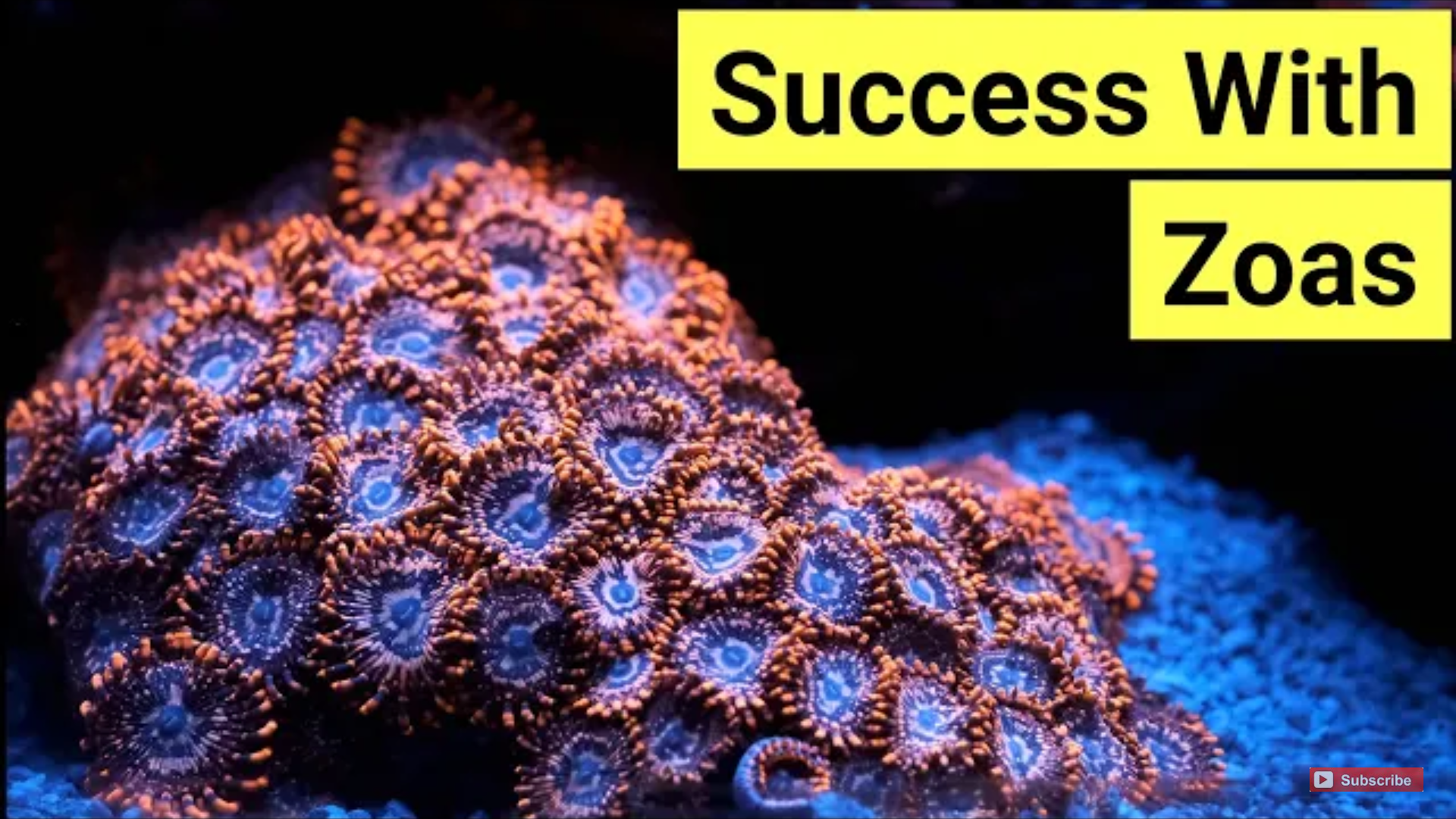Zoas: How to give the best care to your Zoas
- Mar 06, 2021
- Anshika Mishra
- 2344 0 0

Zoas are a great coral for anyone from beginners to seasoned veterans because of their wide range of striking colors, the gentle movement they add to your tank, and their see of keeping. But they are not always as easy as you might think. So here is a complete guide to keeping Zoas by the Reef Dork:
Water Parameter

Since Zoas are soft corals, they don't require calcium, alkalinity, and magnesium to make hard skeletons, but those three must be the staples of all the reef tanks, therefore it is still worth making sure that they are stable particularly alkalinity as that can adversely affect your actual pH which is something that Zoas won't appreciate. But your main focus should be on keeping the sanity and nutrient stable.
Zoas are tolerant of a wide range of parameters and to some extent even swings in these parameters, but they will still appreciate stability as much as any other corals. So, try to keep your nutrients:
- Salinity: 35 parts per thousands
- Phosphate: 0.03
- Nitrate: 5 parts per million
Do not worry if the levels are a bit higher in your tank, as long as your tank is happy, the stability is far more important. Do know that Zoas need regular dosing of Iodine. But supplementing Iodine might be beneficial, but it isn't necessarily essential and it is far more important to get the basics right. Also while dosing Iodine, go slowly as it can build up quickly and cause serious problems for your corals if your iodine level is too high.
Placement

Zoas can stay in both high flow and low flow, but the problem with the low flow is you might find debris settling amongst the Polyps, and even sometimes small bits of gravel can get stuck to Zoas stalks. So, in a nutshell, most of the Zoas will appreciate relatively strong flow, but will also tolerate relatively low flow.
In terms of lights, it is advised to keep Zoas in low-to-medium light. But if you want to keep your Zoas in strong light make sure that you build them up gently, so you don't shock them. If Zoas get too much light they can shrivel up like you in winter.
If your Zoas are stretching in their stalks, it is almost certainly because they are not getting enough light. And if this is happening with your Zoas, you can place them in an area where they can get proper light or bump up your light slowly and monitor them until they return to normal length.
Do know though that some Zoas have naturally longer stalks than others, so don't always mistake the stretched stalk with low light conditions.
Finally, on placement, you should try to isolate Zoas on their own rockwork wherever possible most Zoas do spread fast and can become a weed in no time at all. So, keeping them in their own little island will keep them from taking over your tank.
People often want Zos gardens with bright and contrasting colors next to each other, but be aware that some Zoas can dominate others.
Feeding

According to the Reef Dork feeding, Zoas is not necessary, and advice against it for most people especially beginners. There is no doubt that Zoas benefit from food, and will grow more quickly if they are fed regularly, but Zoas will not show any better colors or health when being fed, the main key to keeping the colors bright is keeping the water parameters stable.
If you feed Zoas you will also be feeding other undesirable organisms in your tank, like algae, Aiptasia, etc. You will also most probably increase your nitrate or phosphate levels so feeding Zoas can easily do more harm than good.
If you are a more advanced hobbyist and want to maximize your Zoas' growth then feeding is worth doing, but almost all Zoas spread very quickly, so the last thing anybody wants is for them to spread quicker.
Fixing Problems

Identifying problems with Zoas is the same as with many other corals. Check your temperature salinity, alkalinity, and nutrients to make sure everything is okay and stable. The most common cause of the problem is too much light in the tank, so try moving the frag to a lower light spot or turning your lights down if you cannot remove the frag.
If you have fishes like Regal Tang, Angelfish, Butterflyfish, or Rabbitfish, there is a big possibility that they are bothering your Zoas. Alternatively, you may have a pest on them, so if you can pull the affected Zoa out, give it a dip in pet treatment and see if anything falls off.
Also just because another Zoas colony in your tank is fine that doesn't mean your after quality is good. Some Zoascan take more punishment than others and there are a few things to know sowers are sold as single polyps which are fine if your water is on point and your tank is establishes. But buying colony or dozens of polyps is a fae safer bet for beginners as single polyps have much more chances of melting into nothing for no apparent reason.
Zoa is also a great candidate for fragging and selling for a bit of extra money. Be aware that some zones contain dangerous toxins so do be careful with them.
Happy Reef-Keeping!







About author